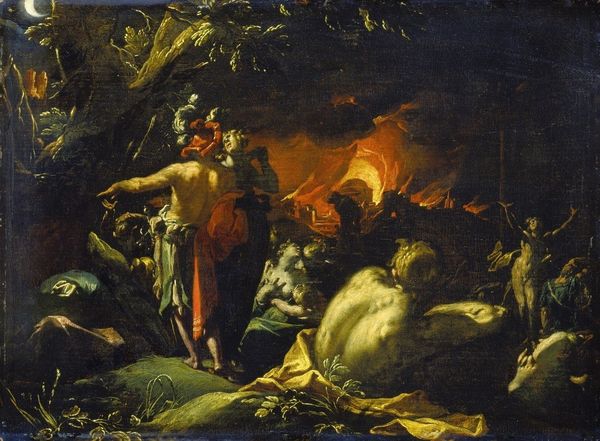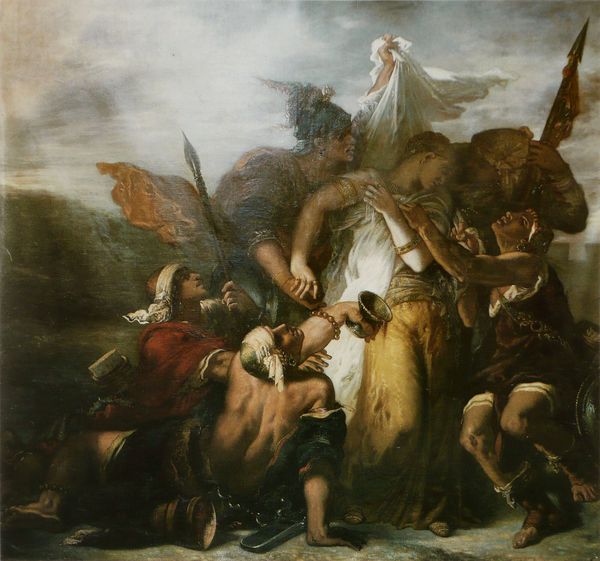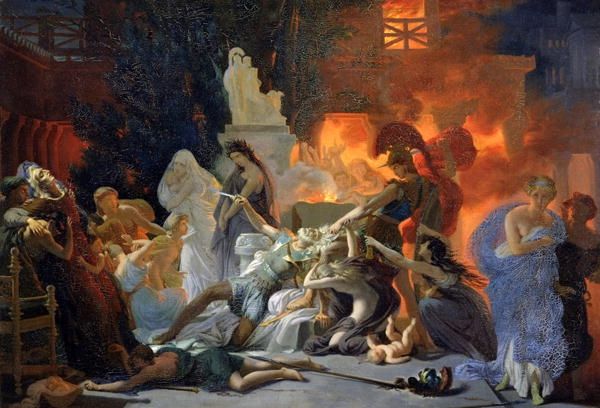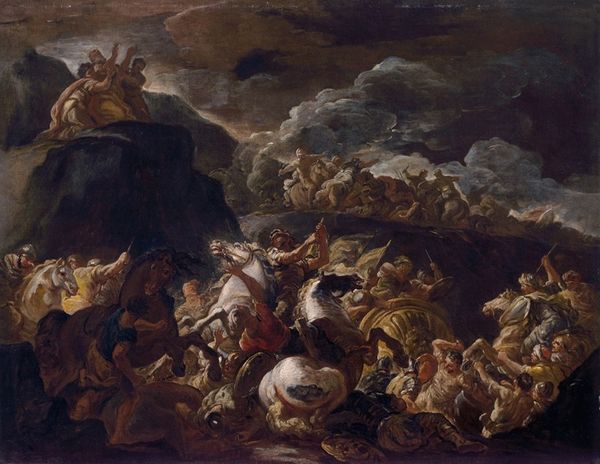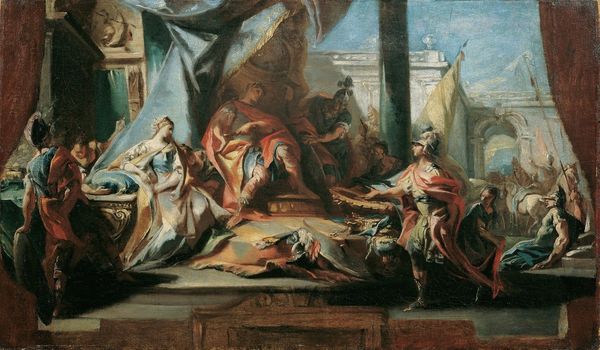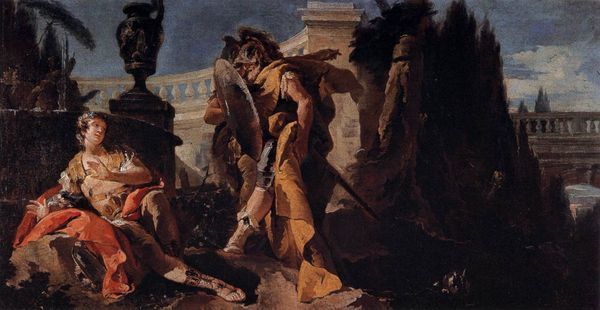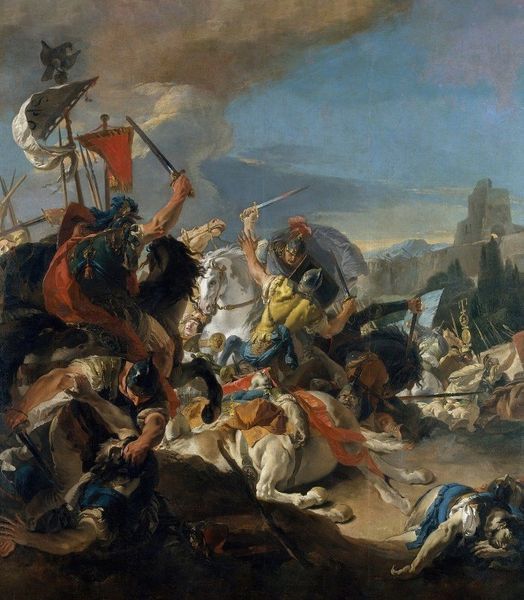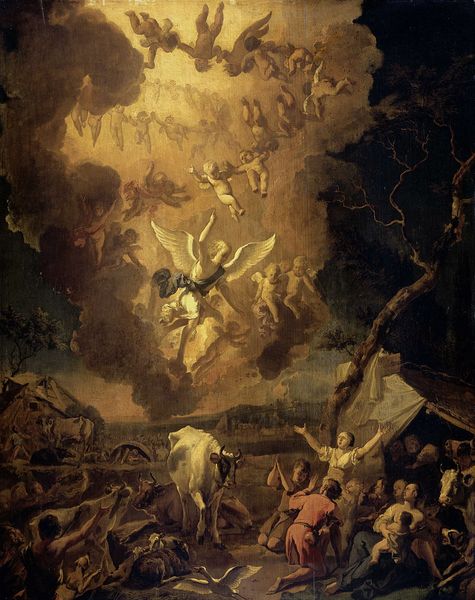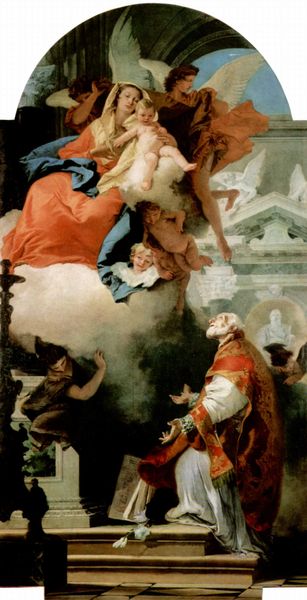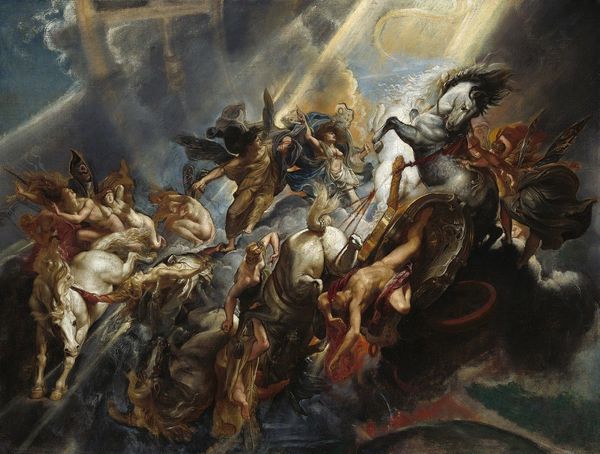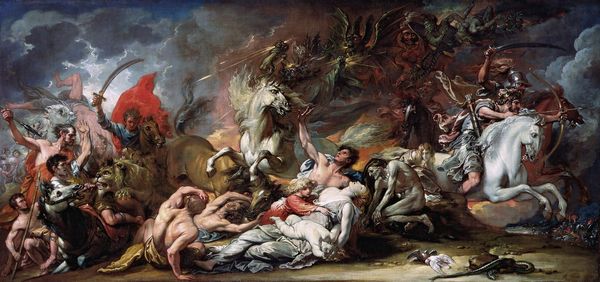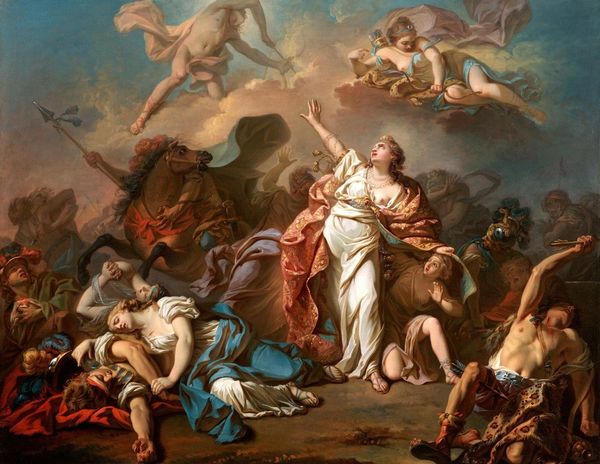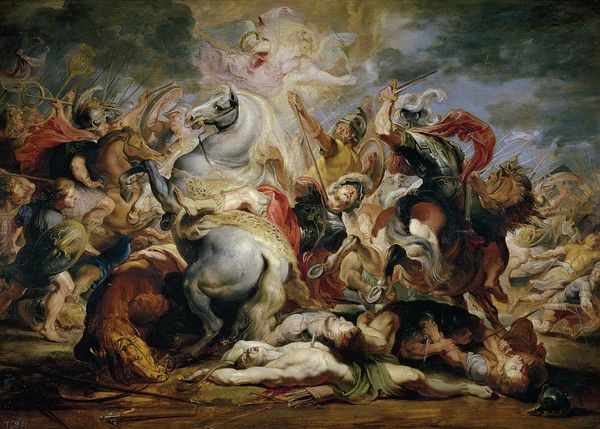
Christ on the Mount of Olives and the angel with the cup of suffering 1750
0:00
0:00
painting, oil-paint
#
narrative-art
#
baroque
#
painting
#
oil-paint
#
figuration
#
oil painting
#
jesus-christ
#
christianity
#
history-painting
#
rococo
#
angel
#
christ
Dimensions: 79 x 90 cm
Copyright: Public domain
Curator: We are looking at Giovanni Battista Tiepolo's "Christ on the Mount of Olives and the angel with the cup of suffering," created around 1750. Editor: It strikes me immediately as an intense and unbalanced composition. The stark light contrasted against the dark mass of figures feels deeply unsettling. Curator: Absolutely. The painting depicts the Agony in the Garden, a pivotal moment where Christ anticipates his crucifixion. Tiepolo, working within the late Baroque/Rococo tradition, uses the symbols of the angel offering the cup – the cup of suffering – to remind viewers about human capacity for spiritual experience and transformation. Editor: The angel, bathed in divine light, practically spills out of the canvas. But it's not only the lighting, it's the dynamism of the angel and Christ contrasting with the flat affect on the faces below that creates unease. Also note the composition itself: how are we to process what’s literally above and what’s been buried by shadow, as we witness an historical, cultural turning point? Curator: Consider the dramatic shift away from divine grandeur that Tiepolo captured. Jesus is fragile, almost childlike. The image resonates because this moment humanizes Christ’s burden for believers; here, He isn't a king, but someone filled with relatable trepidation. Editor: Do you see how those torch-bearing figures seem both menacing and completely oblivious to the magnitude of what’s transpiring? It feels chaotic and tragic because there is very little narrative alignment among these figures. The color, the composition all pull me into these mixed emotions. Curator: Their presence also represents those everyday power structures bearing down on Christ. Their faces suggest societal forces about to overwhelm not only Christ, but a system of spiritual belief and understanding. Editor: For me, what started as compositional uneasiness is now giving way to more deeply internalized questions, a profound questioning that unsettles what's to come for the Christ figure, which is very much embodied formally. Curator: Yes, a narrative that speaks across time and cultures. Thank you for drawing out the power and the enduring questions this artwork evokes.
Comments
No comments
Be the first to comment and join the conversation on the ultimate creative platform.
